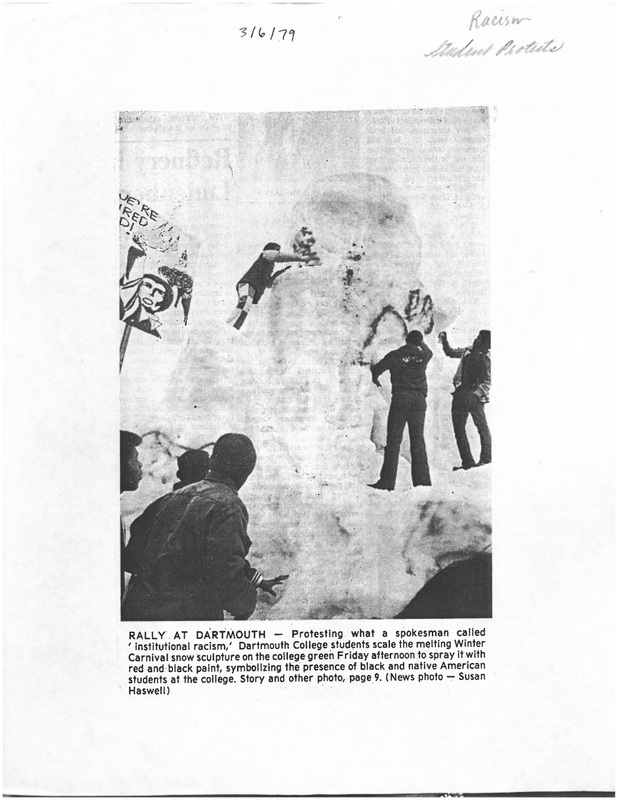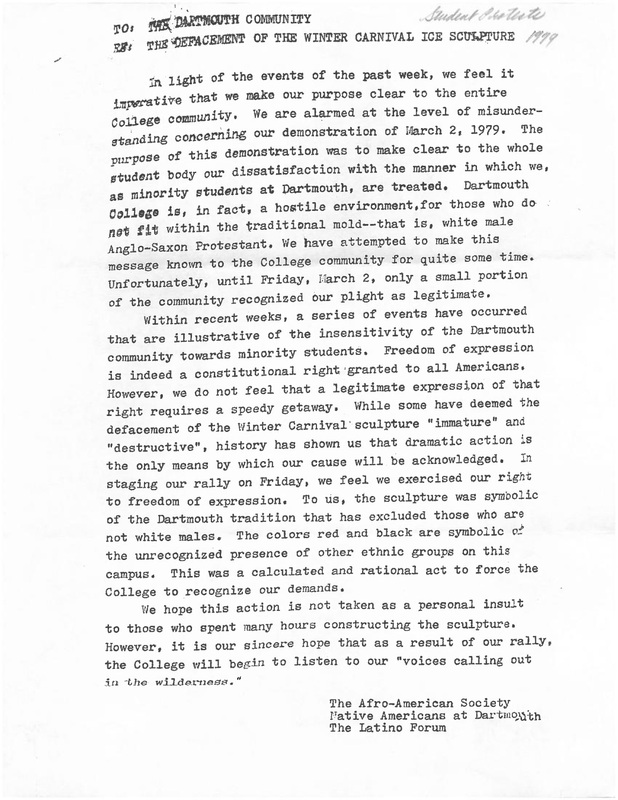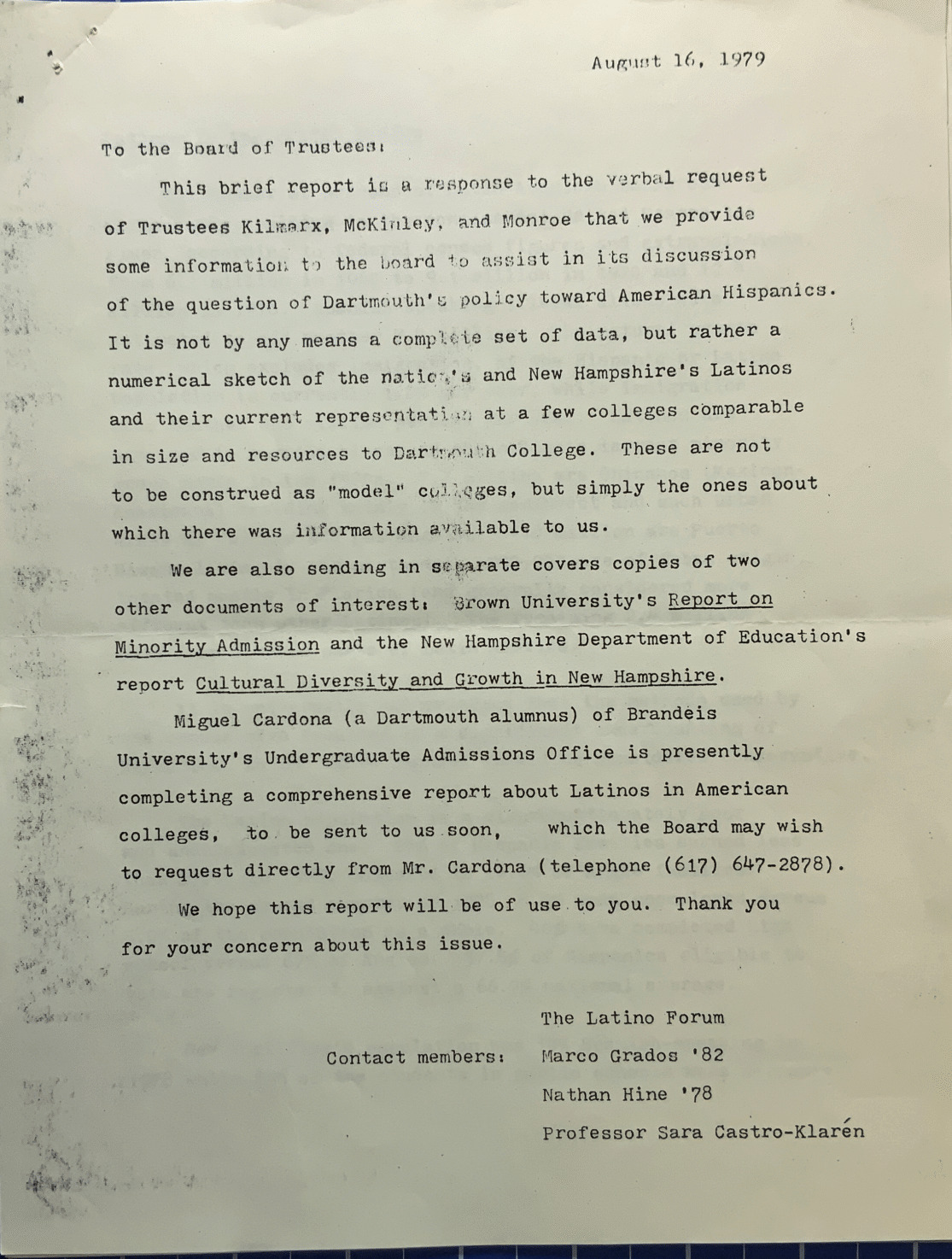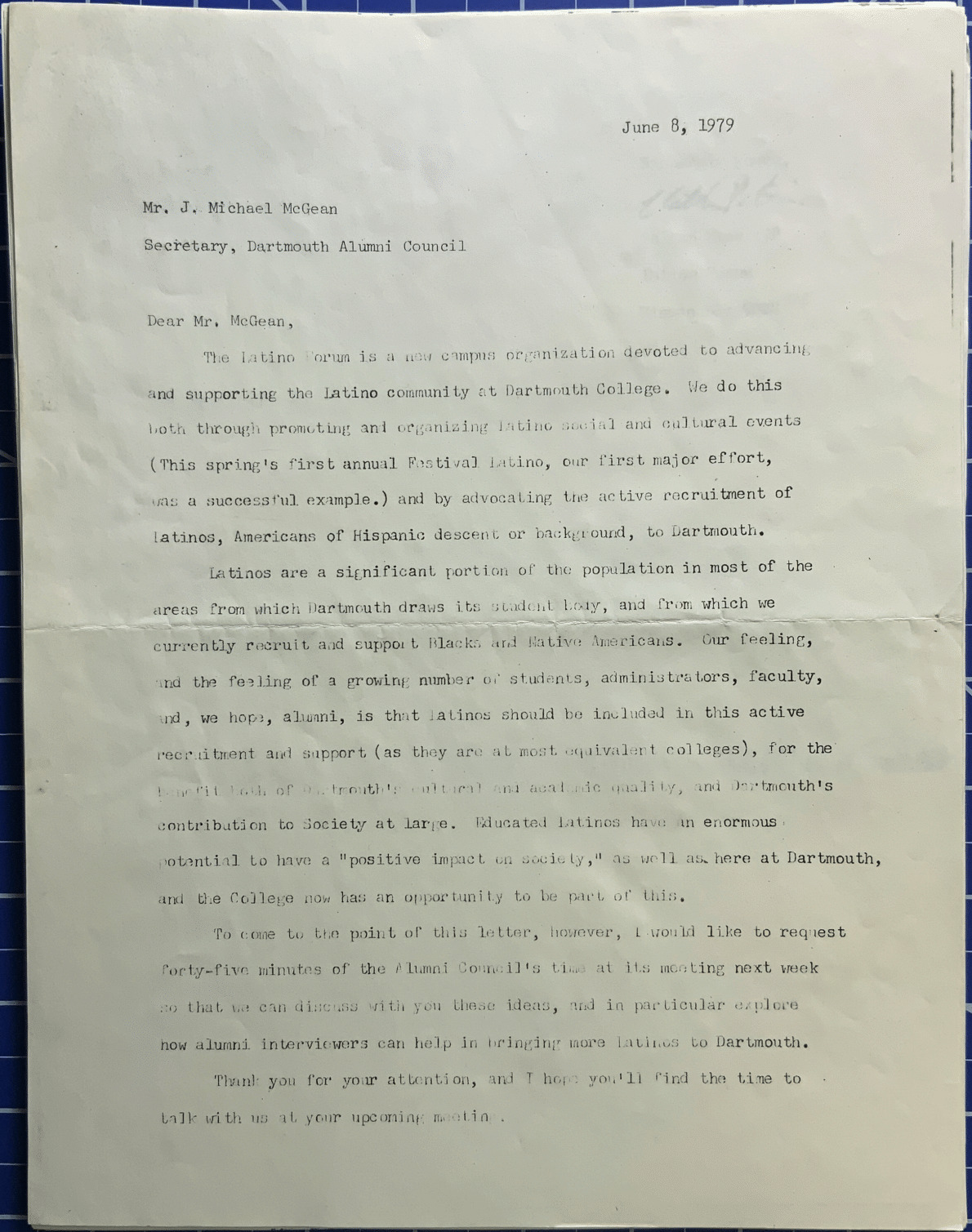1979 - Unrest and the Beginning of Representaton
Moratorium Day
The late 1970's marked the earliest moment on record of a movement towards Latinx acceptance at Dartmouth. In general, 1979 was a year of racial unrest at Dartmouth. On March 2nd, the Afro-American Society, Native Americans at Dartmouth, and the newly formed Latino Forum performed a demonstration that involved defacing the Winter Carnival ice sculpture (pictured upper left), spraying it red and black to represent the Native and Black presence at Dartmouth, respectively. As expected, this was quite a controversial action, which created enough backlash that the organizations felt the need to craft a response to clearly explain their intention to the masses (pictured lower left).
This demonstration was just one of many events and rallies that occurred that winter, all of which in response to high tensions between the general student body and the various minorities on campus, including women. Almost immediately following this demonstration was March 8th, dubbed "Moratorium Day", which was a day when classes were cancelled to call an assembly with the support of President Kemeny featuring speakers from many different affinity groups , including Women at Dartmouth, the Latino Forum, the Afro-American Society and Native Americans at Dartmouth. Demands and calls for listening were all made in attempt to make the College a more inclusive place for any minority. Interestingly enough, the Interfraternity Council was also a sponsor on the proposal to put on Moratorium Day, indicating an acknowledgement from a quintessentially white male organization of the importance of understanding.
Latino Forum
These events mark an interesting point in time as it indicates one of the first actions of the Latino Forum, which began its operations that spring as a organization designed to support the Latinx community. This included the organization of the Festival Latino, which was considered their first major event. It is likely that the Latino Forum fed on the motivation to push back supplied by the Afro-American Society and Native Americans at Dartmouth, giving themselves the strength to fight for their own affinity.
The Latino Forum's largest contribution other than Moratorium Day and the Festival Latino seems to be their recruiting efforts. In a letter to the Board of Trustees (pictured upper right), they argued that other universities of similar prestige seem to have classes with at minimum 1% Latinx students in recent years. Dartmouth, however, matriculated as little as 0.3% students with Spanish last names, which implies that even less could be considered part of the Latinx community. They emphasized how the Latinx population has risen in recent years across the United States and in the specific states from which Dartmouth tends to pull (New Hampshire, Massachusettes, etc.). They also noted that the Latinx community could benefit from access to better education, as they had even worse poverty rate than the Black community at the time.
Ironically, following their proclamation of existence to the administration that summer (pictured lower right), there is not much evidence that the Latino Forum continued operations much past that year. However, the Dartmouth Association of Latino Alumni (DALA) cites the Latino Forum as the inciting factor of its organization, and they continue many of the same efforts to support the Latinx community, including recruiting efforts and working with Latinx organizations on campus. Regardless, as early as the 1970's, there were clear movements for Latinx inclusion, recruitment, and acceptance at Dartmouth, which would take a long time to be comprehnsively recognized.




